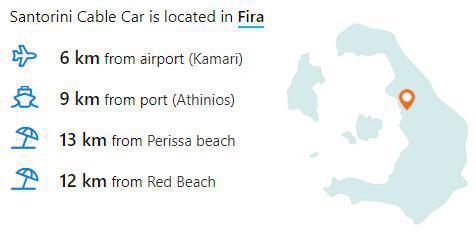
Santorini Cable Car
Thera Thira GR
A huge increase in tourism, which started around the 70’s, as well as the plethora of liners that reached the old port of Santorini, Gialos, led to the foundation of the cable car in order to provide visitors a safe transport from the old port to the capital of Santorini, Fira. Until then, the only option was the long winding stairs, where visitors could either walk or ride a mule, a traditional activity of Santorini that goes on until today. However, this is a slow and tiring option, inappropriate for heavy baggage and even not feasible for some groups of people, like the elderly and children.
The ship owner Evangelos Nomikos, a resident of Santorini until his death that came from Messaria village, who is considered the benefactor of the island for his various donations, established the “Loula and Evangelos Nomikos Foundation” in 1979 and funded the construction of the cable car entirely, whose cost was about 140 million drachmas (the pre-euro currency of Greece). Its construction started in the autumn of 1980 and it was complete by the summer of 1982. This advanced work made a great contribution to the island’s prosperity and development of tourism. Nowadays, the cable car belongs to the Municipality of Thera and a part of the earnings is given to the mule drivers in recognition of their hard work and in an effort to keep the tradition alive.
The route from the old port to the beautiful capital and vice versa takes only 3 minutes. The cable car can serve up to 1,200 persons per hour and offers convenient transport to those who own a liner or those who wish to take a trip to the volcano (a highly recommended experience), as the boats for the tour depart from the old port of Fira. Some people can also use it just to admire the amazing view of the stunning caldera, the sea, and the volcano from a 220 meters altitude. It is a charming journey that saves time and energy, is ideal for exceptional photographs to capture your memorable moments, and gives away rapture, caused by the unprecedented wild natural beauty.
